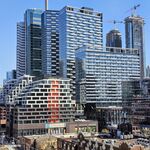Alley Kat
Active Member
Kensington Market - Developers
Is Kensington about to get a new suit?
Developers - and the local councillor - have big plans for the market's quiet laneways
JOHN LORINC
Special to The Globe and Mail
June 23, 2007
From his busy perch on Baldwin Avenue, haberdasher Tom Mihalik casts an appraising eye over Kensington Market and sees an area undergoing a kind of revival. "I see new faces and new owners and a lot of young people shopping and opening up stores," he says. So the owner of Tom's Place feels the market doesn't need a makeover so much as a bit of tailoring - repairing a cuff, fixing a seam, maybe adding a nice tie.
With Toronto's real-estate boom going strong all around it, Kensington can't remain tatty forever. As far as Mr. Mihalik is concerned, development in the market is good "as long as they don't try to change it into a mall." And though it may not look like a mall, development is certainly on the way: A group of investors has been quietly buying up land in the laneways and courtyards within Kensington's city blocks.
According to sources, British architect Will Alsop - the iconoclastic designer of the eye-catching addition to the Ontario College of Art & Design - is involved in the venture, possibly drawing up an area master plan that will include the crime-ridden Alexandra Park housing project on the south side of Dundas.
While Mr. Alsop was in town last week promoting an exhibition of his paintings of a reimagined Kensington, he denied having a commission. But he said the area is crying out for more density. "We'd love to be involved there."
The question is whether such moves are paving the way for the gentrification of Kensington Market.
For years, Kensington worked because it didn't quite work. The market's eclectic chaos evolved organically, thanks to generations of immigrant merchants operating in tiny shops on narrow lots, many with residences opening onto rear service laneways.
The streets aren't easily navigated, and fractured land-ownership patterns allowed Kensington to remain essentially unchanged for decades. "The market," area councillor Adam Vaughan says, "has naturally built-in deficiencies that allow it to survive."
But in the past few years, the roster of market merchants has grown to include a controversial Valu-mart supermarket, a spiffy chain bakery, several upscale restaurants and a pair of loft developments. Perhaps not coincidentally, the area's growing popularity has received a boost from Pedestrian Sundays, now in its fourth year.
The 16 investors behind the land assembly want to open up entirely new development opportunities by building mixed-use infill projects (a mix of retail, residential and other commercial buildings) along the market's network of laneways. Most are now difficult to access and lined with derelict structures, although there are several laneway residences. Mr. Vaughan has met with the investors and was shown architectural renderings. When it comes to the market's familiar streetscape, he says he has been assured "not one brick will be touched."
Mr. Vaughan also feels there are public-space improvements to made, such as transforming one parking lot - locked inside the block northwest of Spadina and Dundas - into an open-air market to complement the merchants operating on Kensington's internal streets. "The laneways create new ways of circulating through the market. If they were turned into mews, you could develop street faces and a whole new shopping environment that is car-free," Mr. Vaughan says. "Is there an opportunity to play here that the neighbourhood might be interested in?"
Any change may well be a tough sell for the market's famously anarchic denizens. "It's a whole big shift for the market," admits Yvonne Bambrick, one of the co-founders of Pedestrian Sundays. Like most Kensington aficionados, she worries about the spectre of gentrification, although she says there should be more housing.
While Mr. Vaughan insists that he's "totally committed" to establishing a public consultation process, it's far from clear how the city should respond to signals that redevelopment activity may be in the offing.
The city's traditional approach to the area has been one of benign neglect - a stance that helps sustain its funkiness and resilience. For the past few years, however, the city has had no secondary plan for Kensington, which is designated as a historically significant district in the official plan. "It's probably a Queen West waiting to happen," says one planning insider, referring to the development frenzy that slammed into the Queen West Triangle in the past two years.
In that case, city planners were caught unprepared for the rush of high-density development applications on several blocks between Queen and the railway corridor.
The conditions for a reprise seem ripe. As Mr. Mihalik points out, "Real-estate prices have gone up everywhere except Kensington. I would like to see owners who've been here for 30 or 40 years get a decent return on their investment. That's only fair."
The real estate is also more closely held than many residents assume. "It's a handful of people who own most of the properties here," says Victor Pavao, owner of Casa Açoreana, a café and bulk-food emporium on Augusta Avenue.
If the city moved to make the market's warren-like laneways more accessible - a process that would involve expropriations, public-space improvements and changes to the city's policy of rejecting laneway development - it could trigger a jump in real-estate prices as galleries, boutiques and cafés move in to these newly created mews.
At present, planning officials say they've received no formal or informal inquiries about development. The city isn't working on any sort of area planning study, which often signals to the development industry that an area is ripe for redevelopment.
The other piece of the puzzle is Alexandra Park, the Toronto Community Housing Corporation complex just south of the market. Mr. Vaughan confirms that the TCHC is studying the idea of a joint redevelopment along both sides of Dundas Street. "I have asked everyone to think of [them] as two neighbourhoods that could both benefit from collaboration," he says.
Mr. Alsop says he's intrigued by the notion of combining Alexandra Park and the market, as well as building funky infill projects, including some that would "hover" over the area - his signature design.
That kind of planning could lead to the provision of new affordable housing south of Dundas. But Mr. Alsop feels that such changes will also draw more tourists and prompt "wealthy people" to move into the market. Rents are unlikely to remain low, he adds, citing the way London's quirky Portobello Road market district became "super unaffordable" after being featured in the movie Notting Hill.
Change is inevitable, Mr. Alsop says. "Kensington could become a really interesting place." But then many would say it already is.
Is Kensington about to get a new suit?
Developers - and the local councillor - have big plans for the market's quiet laneways
JOHN LORINC
Special to The Globe and Mail
June 23, 2007
From his busy perch on Baldwin Avenue, haberdasher Tom Mihalik casts an appraising eye over Kensington Market and sees an area undergoing a kind of revival. "I see new faces and new owners and a lot of young people shopping and opening up stores," he says. So the owner of Tom's Place feels the market doesn't need a makeover so much as a bit of tailoring - repairing a cuff, fixing a seam, maybe adding a nice tie.
With Toronto's real-estate boom going strong all around it, Kensington can't remain tatty forever. As far as Mr. Mihalik is concerned, development in the market is good "as long as they don't try to change it into a mall." And though it may not look like a mall, development is certainly on the way: A group of investors has been quietly buying up land in the laneways and courtyards within Kensington's city blocks.
According to sources, British architect Will Alsop - the iconoclastic designer of the eye-catching addition to the Ontario College of Art & Design - is involved in the venture, possibly drawing up an area master plan that will include the crime-ridden Alexandra Park housing project on the south side of Dundas.
While Mr. Alsop was in town last week promoting an exhibition of his paintings of a reimagined Kensington, he denied having a commission. But he said the area is crying out for more density. "We'd love to be involved there."
The question is whether such moves are paving the way for the gentrification of Kensington Market.
For years, Kensington worked because it didn't quite work. The market's eclectic chaos evolved organically, thanks to generations of immigrant merchants operating in tiny shops on narrow lots, many with residences opening onto rear service laneways.
The streets aren't easily navigated, and fractured land-ownership patterns allowed Kensington to remain essentially unchanged for decades. "The market," area councillor Adam Vaughan says, "has naturally built-in deficiencies that allow it to survive."
But in the past few years, the roster of market merchants has grown to include a controversial Valu-mart supermarket, a spiffy chain bakery, several upscale restaurants and a pair of loft developments. Perhaps not coincidentally, the area's growing popularity has received a boost from Pedestrian Sundays, now in its fourth year.
The 16 investors behind the land assembly want to open up entirely new development opportunities by building mixed-use infill projects (a mix of retail, residential and other commercial buildings) along the market's network of laneways. Most are now difficult to access and lined with derelict structures, although there are several laneway residences. Mr. Vaughan has met with the investors and was shown architectural renderings. When it comes to the market's familiar streetscape, he says he has been assured "not one brick will be touched."
Mr. Vaughan also feels there are public-space improvements to made, such as transforming one parking lot - locked inside the block northwest of Spadina and Dundas - into an open-air market to complement the merchants operating on Kensington's internal streets. "The laneways create new ways of circulating through the market. If they were turned into mews, you could develop street faces and a whole new shopping environment that is car-free," Mr. Vaughan says. "Is there an opportunity to play here that the neighbourhood might be interested in?"
Any change may well be a tough sell for the market's famously anarchic denizens. "It's a whole big shift for the market," admits Yvonne Bambrick, one of the co-founders of Pedestrian Sundays. Like most Kensington aficionados, she worries about the spectre of gentrification, although she says there should be more housing.
While Mr. Vaughan insists that he's "totally committed" to establishing a public consultation process, it's far from clear how the city should respond to signals that redevelopment activity may be in the offing.
The city's traditional approach to the area has been one of benign neglect - a stance that helps sustain its funkiness and resilience. For the past few years, however, the city has had no secondary plan for Kensington, which is designated as a historically significant district in the official plan. "It's probably a Queen West waiting to happen," says one planning insider, referring to the development frenzy that slammed into the Queen West Triangle in the past two years.
In that case, city planners were caught unprepared for the rush of high-density development applications on several blocks between Queen and the railway corridor.
The conditions for a reprise seem ripe. As Mr. Mihalik points out, "Real-estate prices have gone up everywhere except Kensington. I would like to see owners who've been here for 30 or 40 years get a decent return on their investment. That's only fair."
The real estate is also more closely held than many residents assume. "It's a handful of people who own most of the properties here," says Victor Pavao, owner of Casa Açoreana, a café and bulk-food emporium on Augusta Avenue.
If the city moved to make the market's warren-like laneways more accessible - a process that would involve expropriations, public-space improvements and changes to the city's policy of rejecting laneway development - it could trigger a jump in real-estate prices as galleries, boutiques and cafés move in to these newly created mews.
At present, planning officials say they've received no formal or informal inquiries about development. The city isn't working on any sort of area planning study, which often signals to the development industry that an area is ripe for redevelopment.
The other piece of the puzzle is Alexandra Park, the Toronto Community Housing Corporation complex just south of the market. Mr. Vaughan confirms that the TCHC is studying the idea of a joint redevelopment along both sides of Dundas Street. "I have asked everyone to think of [them] as two neighbourhoods that could both benefit from collaboration," he says.
Mr. Alsop says he's intrigued by the notion of combining Alexandra Park and the market, as well as building funky infill projects, including some that would "hover" over the area - his signature design.
That kind of planning could lead to the provision of new affordable housing south of Dundas. But Mr. Alsop feels that such changes will also draw more tourists and prompt "wealthy people" to move into the market. Rents are unlikely to remain low, he adds, citing the way London's quirky Portobello Road market district became "super unaffordable" after being featured in the movie Notting Hill.
Change is inevitable, Mr. Alsop says. "Kensington could become a really interesting place." But then many would say it already is.




